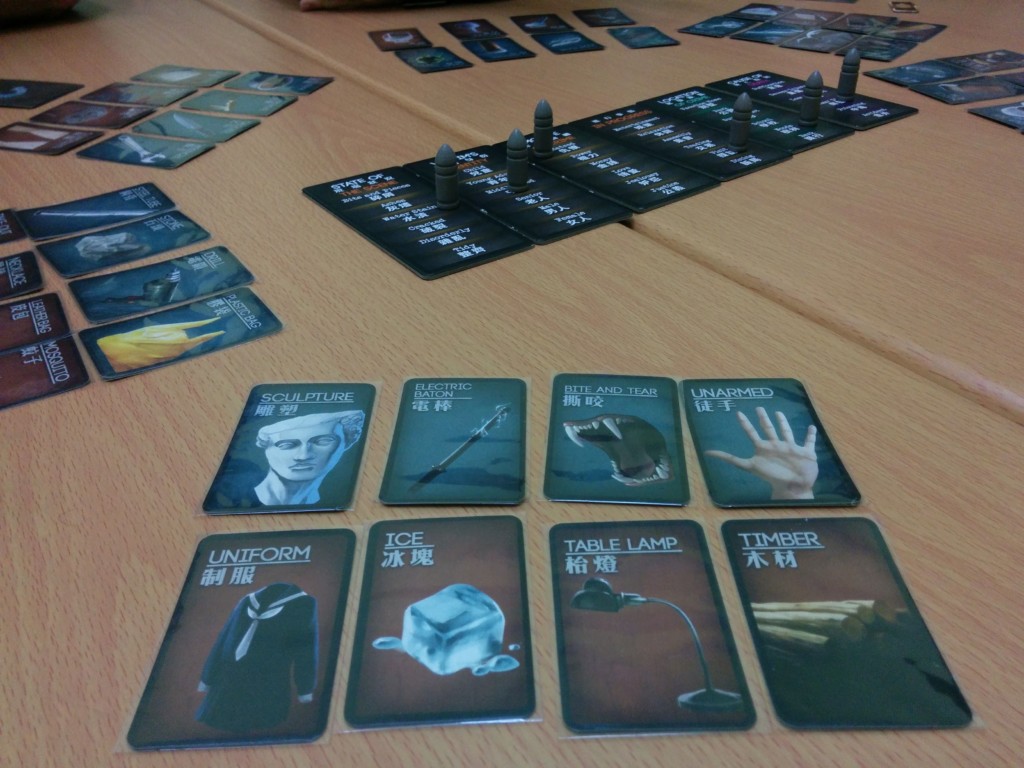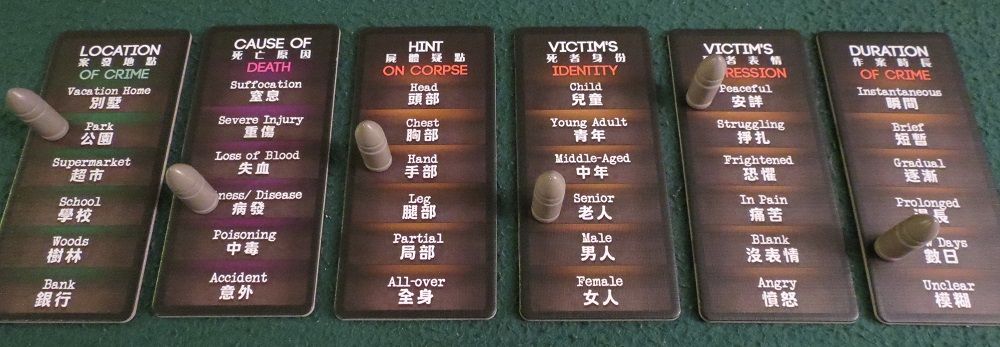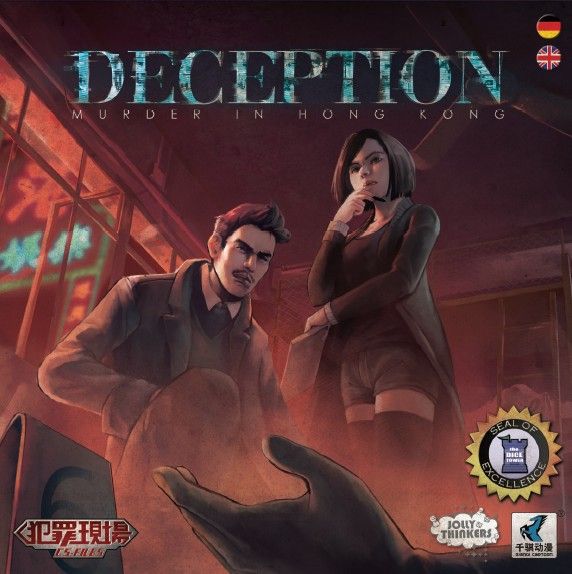Deception: Murder in Hong Kong is a game I played a lot, even back to when it was called CS-Files but I never wrote about it.
Well, I am now.
Players take on the roles of investigators attempting to solve a murder case – but there’s a twist. The killer is one of the investigators!
Deception: Murder in Hong Kong Game Play
This is a social deduction game so it’s rules-light as it’s all based around table talk. If you want any Tips for these styles of games, watch my tips for social deduction games video.
Depending on the player count a number of roles will be given out. There is always one Murderer, one Forensic Scientist and at higher player counts you can add an Accomplice and/or a Witness. The rest of the players are investigators.
Everyone except for the Forensic Scientist gets 4 red Clue cards and 4 blue Means cards face up positioned so everyone can see them.

Script
Then you do the standard eyes closed thing, narrated by the Forensic Scientist.
“Everyone, close your eyes.”
“Murderer (and Accomplice), open your eyes.”
“Murderer, point to your Key Evidence and Means of Murder cards”
“Close your eyes.”
“Witness, open your eyes.” The Forensic Scientist points to the Murderer & the Accomplice.
“Witness, close your eyes.”
“Everyone, open your eyes.”
The Forensic Scientist picks a Death and Location scene card as well as 4 random ones. Table talk follows for everyone but the Forensic Scientist who can add 1 marker to each of their scene cards to help the Investigators.

When they have placed their 6th marker the round ends.
Solving the Crime
Once per game, each player except the Forensic Scientist can have a go at solving the crime. They announce they are trying to solve the crime and will point to a clue and a means card around the table.
If correct, the Forensic Scientist, Investigators and Witness will win. If a Witness is in the game the Murderer and Accomplice can point them out they will win instead. (They kill the witness before the trial and get off with it!)
If the guess is wrong the player can still talk but can not try and solve the crime.
In the second and third rounds, the Forensic Scientist can draw a new scene card and replace an existing one.
If everyone has had a guess and the crime is unsolved, the Murderer and Accomplice will win.
Theme
Murder! The mechanisms fit the theme. The witness needs to remain hidden while the murderer is going to confuse things.
If you wanted to be picky, the Witness can’t help the investigation to the best of their ability and the murderer is putting themselves front and centre… But who cares.
Setup & Rulebook
Setup is easy enough, just shuffle and deal things around. Keep those roles hidden!
The rulebook was pretty big for such a rules-light small game.
Components & Artwork
There aren’t many components, to be honest. The tiles are OK and the bullet tokens are a nice touch. I mean, I’m not sure a bullet is the best thing as the murder is very rarely gun-based. A magnifying glass, notebook, camera or another crime scene-related item would have been more appropriate.
The art has a really nice look.
Ease of Teaching & Accessibility
I say this all the time but games with limited communication provide a bar to accessibility. This game is a little longer than some so maybe a few games of One Night Ultimate to help new players get used to the idea?
In big groups, especially nervous players can be given an investigator role openly in the first game or two and go from there.
Deception: Murder in Hong Kong Summary
These games are done to death! The Resistance: Avalon is still my favourite longer-style game with One Night Ultimate Supervillains and Werewords my favourite short-form social deduction game.
I actually thought about this game a lot when I recently played Obscuio because it’s pretty much the same game but with a weird theme. That game has a silent moderator and a traitor.
Having the silent ‘moderator’ in games like this and Mysterium works well because they’re always in the game. They need to listen carefully to where the Investigators are going with their thoughts so they know which clue to change.
I mentioned Avalon and ONU Supervillains and that’s the problem for me with this game. I either like a long game like Avalon where it becomes a battle of player vs player. Or I like several short games for a quick bit of fun over and over. This sits right in the middle.
But, it’s a good fun game with lots of interesting combinations of clues and means combined with the scene cards which leads to some interesting combinations and fun table talk.
Jesta ThaRogue



Leave a Reply